Economy

Global Steel Production Slows Through November
Written by Peter Wright
January 2, 2020
Steel production in the U.S. declined in the period from September-November 2019, but by less than the rest of the world, excluding China, according to Steel Market Update’s latest analysis of World Steel Association data.
Figure 1 shows annualized monthly global steel production on a three-month moving average (3MMA) basis and capacity utilization since January 2000. Based on OECD data (see below), capacity utilization in November on a 3MMA basis was 80.5 percent, down from 86.0 percent in June. On a tons-per-day basis, production in November was 4.926 million metric tons, down from June’s all-time high of 5.301 million metric tons.

On average, global production on a tons-per-day basis peaked in the early summer in the years 2010 through 2016, but in 2017 and 2018 the second half downtrend was delayed until the fourth quarter. This year seems to have reverted to the norm with peak production in June. Figure 2 shows the average tons per day of production for each month since 2011. On average, November declined by 1.1 percent from October, which was exactly the same as November’s decline in 2019.
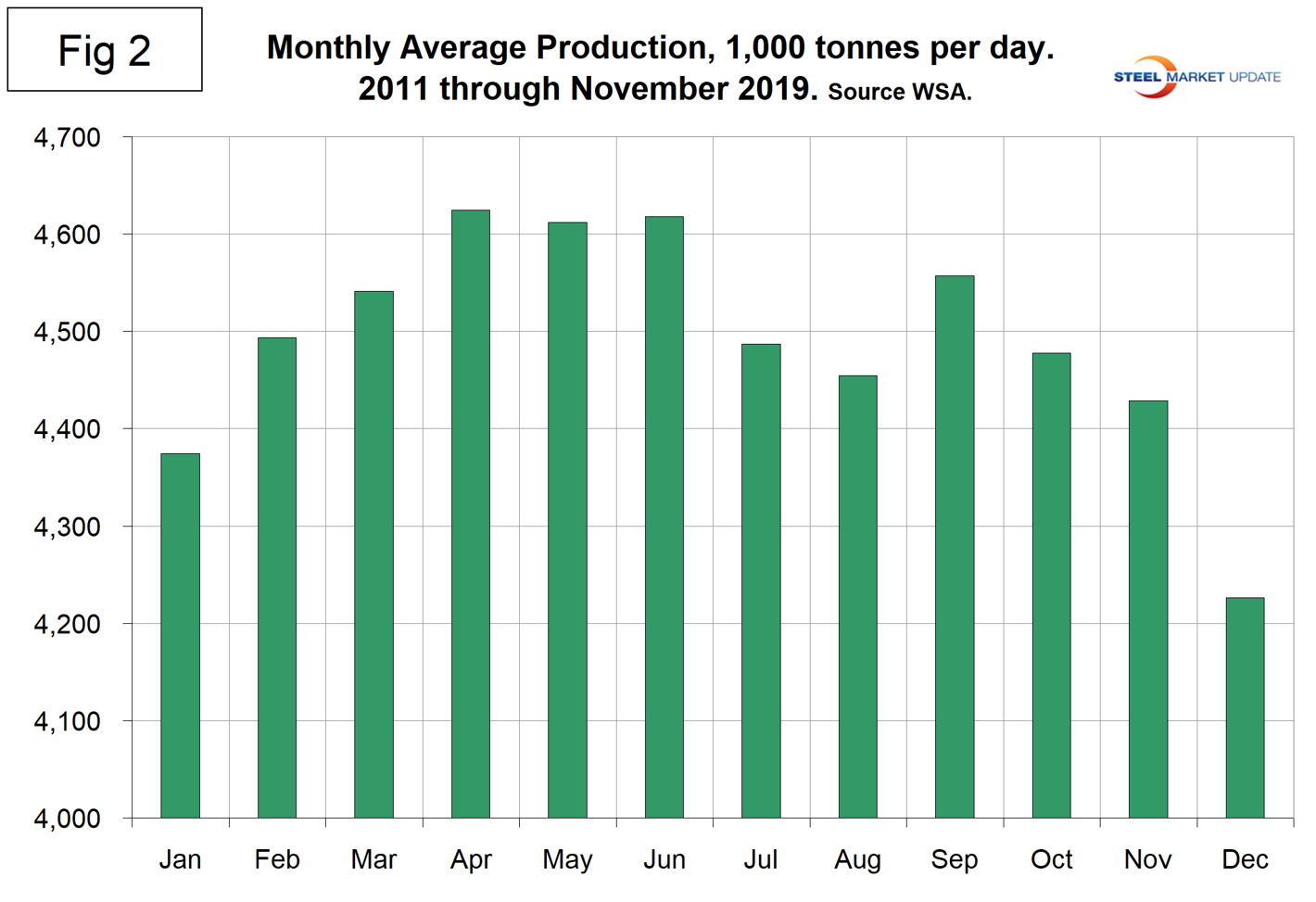
Figure 3 shows the year-over-year growth rate of the 3MMA of global production since January 2005. Growth in three months through November was negative 1.6 percent, down every month from 5.9 percent in April and May. October and November were the first negative growth months since March 2016. China had positive growth in November of 1.8 percent. Growth of steel production for the rest of the world was negative 5.4 percent in three months through November.
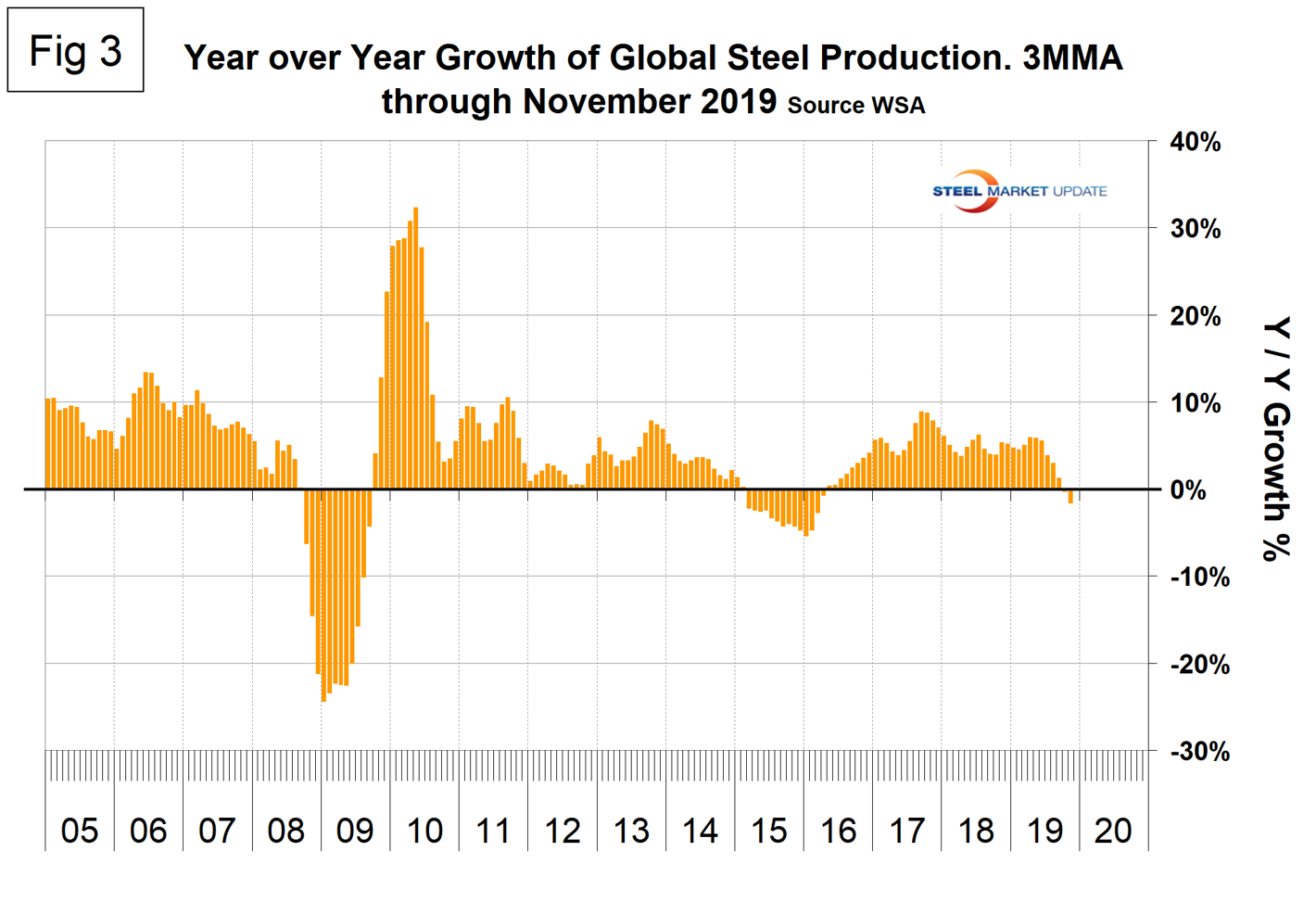
Table 1 shows global production broken down into regions, the production of the top 10 nations in the single month of November, and their share of the global total. It also shows the latest three months and 12 months of production through November with year-over-year growth rates for each period. Regions are shown in white font and individual nations in beige. The world overall had negative growth of 1.6 percent in three months and positive 2.9 percent in 12 months through November. When the three-month growth rate is lower than the 12-month growth rate, as it was each month in July through November, we interpret this to be a sign of negative momentum. On the same basis in November, China grew by 1.8 percent and 7.3 percent, respectively, and therefore also had negative momentum. All regions including Asia had negative growth in three months through November year-over-year. Table 1 shows that North America was down by 4.6 percent in the last three months. Within North America, production was down by 3.3 percent in the U.S., down by 8.5 percent in Canada, and down by 8.3 percent in Mexico. (Canada and Mexico are not shown in Table 1.)
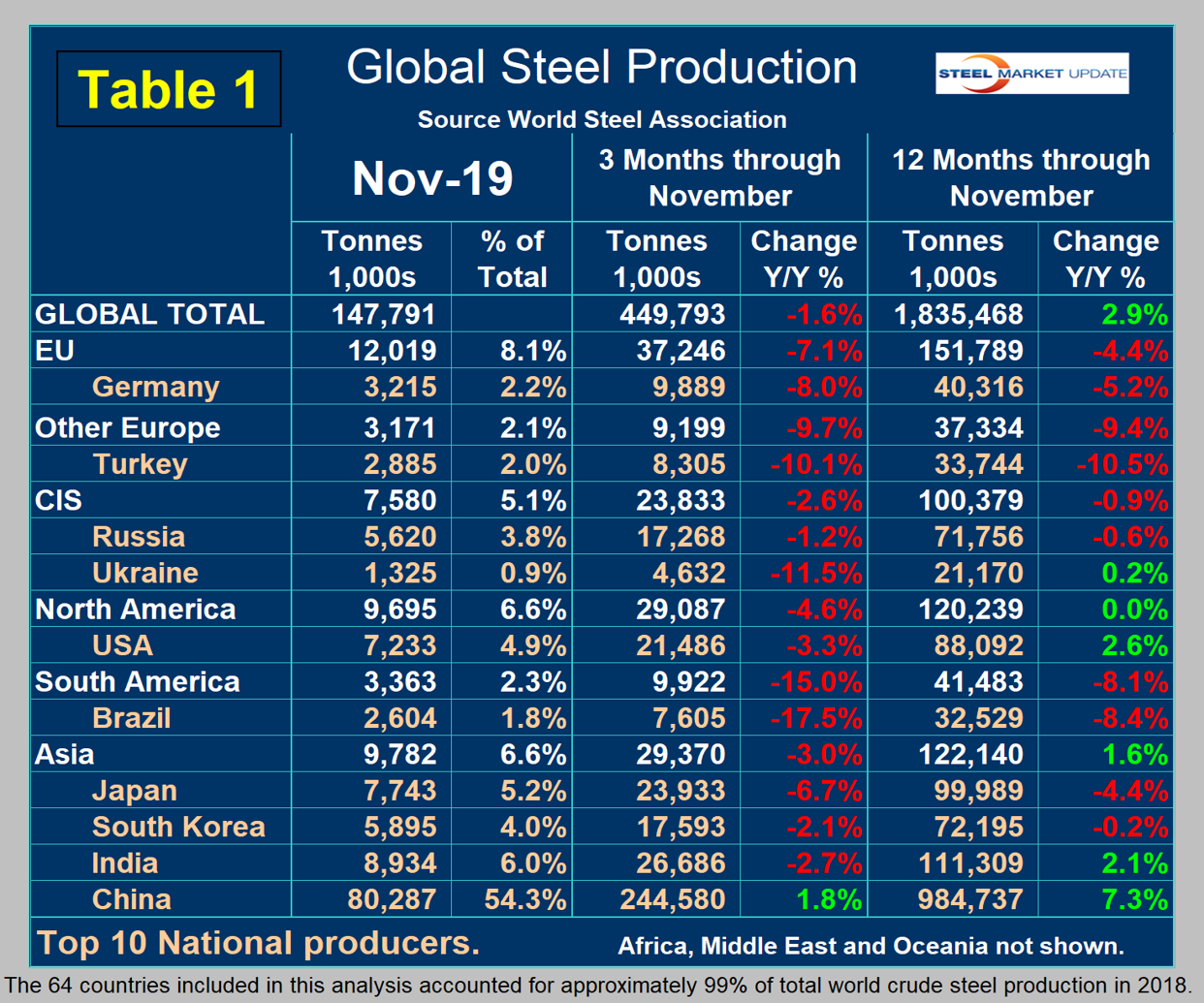
In the 12 months of 2018, 119.9 million metric tons were produced in North America of which 72.3 percent was produced in the U.S., 10.9 percent in Canada and 16.8 percent in Mexico. Based on the OECD data, U.S. capacity in 2018 was 112.6 million metric tons with a capacity utilization of 76.9 percent.
Figure 4 shows China’s production since 2005. As just stated, global steel production was down by 1.6 percent in three months through November year-over-year and China was up by 1.8 percent, both with negative momentum. The updated OECD data shows China’s capacity in 2018 to be 1,023,400,000 metric tons. The WSA reported China’s production to be 924,752,000 metric tons in 2018. Comparing the two figures yields a capacity utilization of 90.4 percent. That calculation doesn’t work for 2019 production because we don’t know the current capacity.
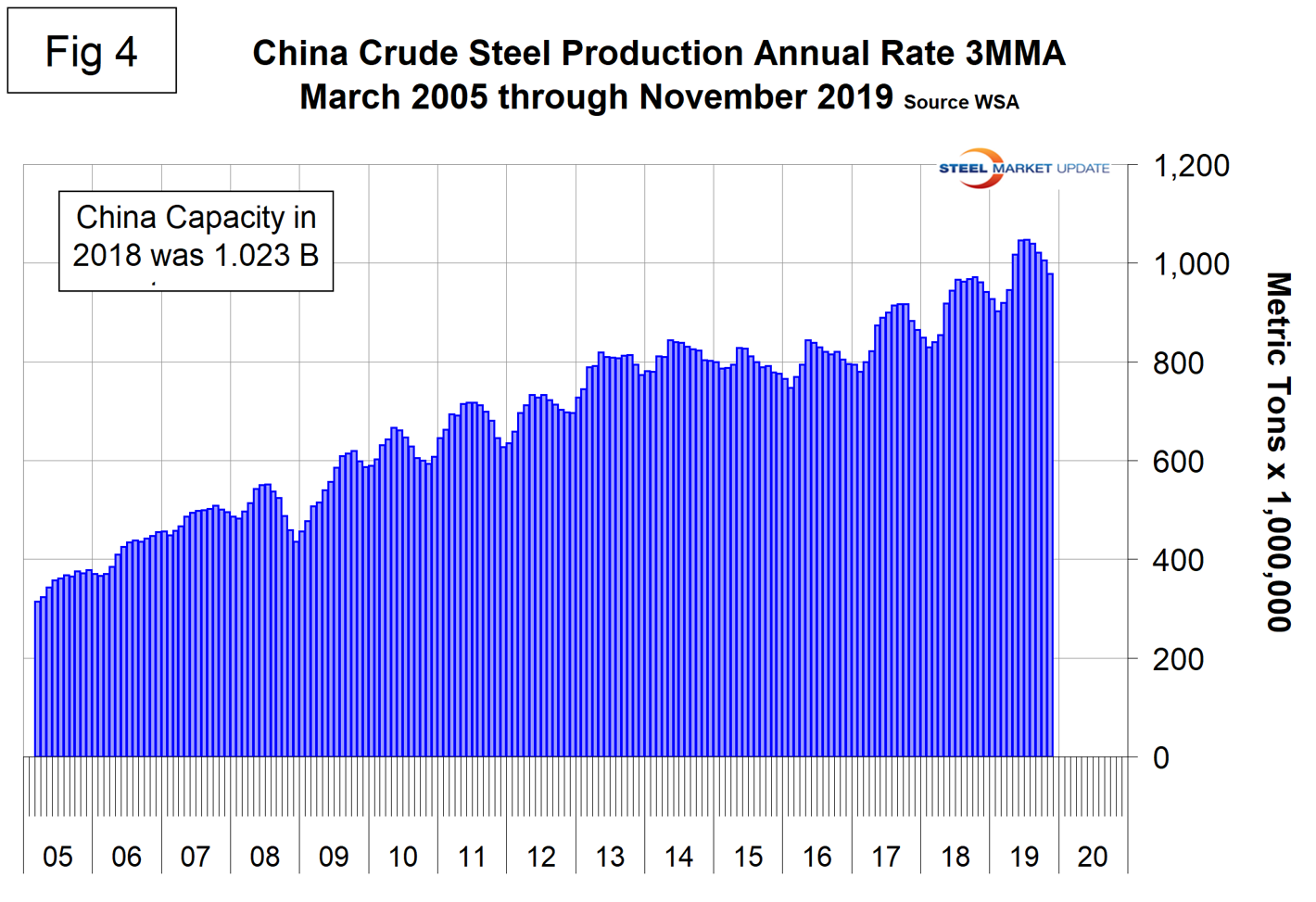
Figure 5 shows the growth of China’s steel production since January 2013 and Figure 6 shows the growth of global steel excluding China. China’s domination of the global steel market is increasing and in each month May through October had an annualized production rate of over one billion metric tons. November fell back to 978 million tons.

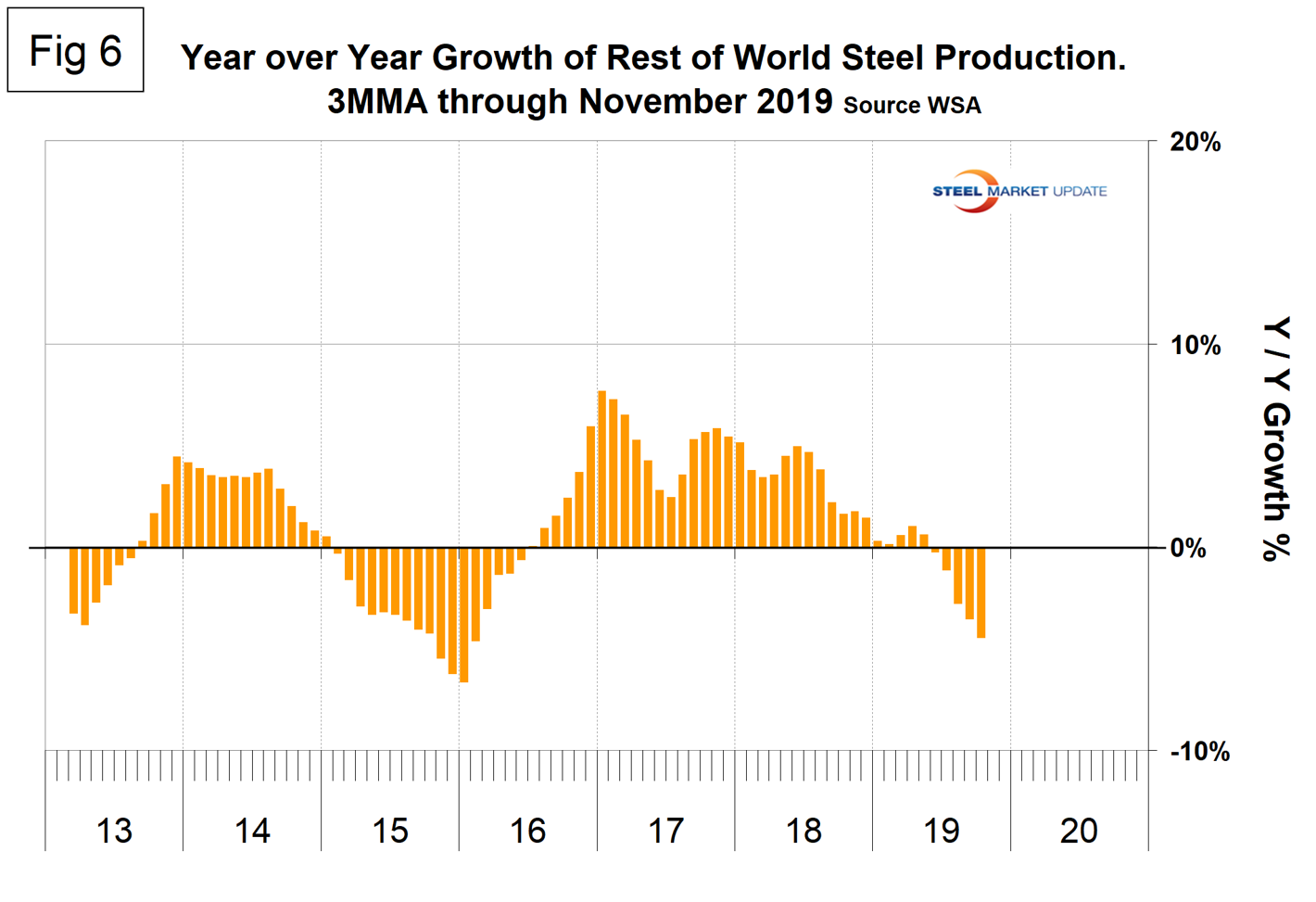
Figure 7 shows the growth of China’s share of global steel production, which in November was 54.3 percent, down from the all-time high of 56.2 percent in August.
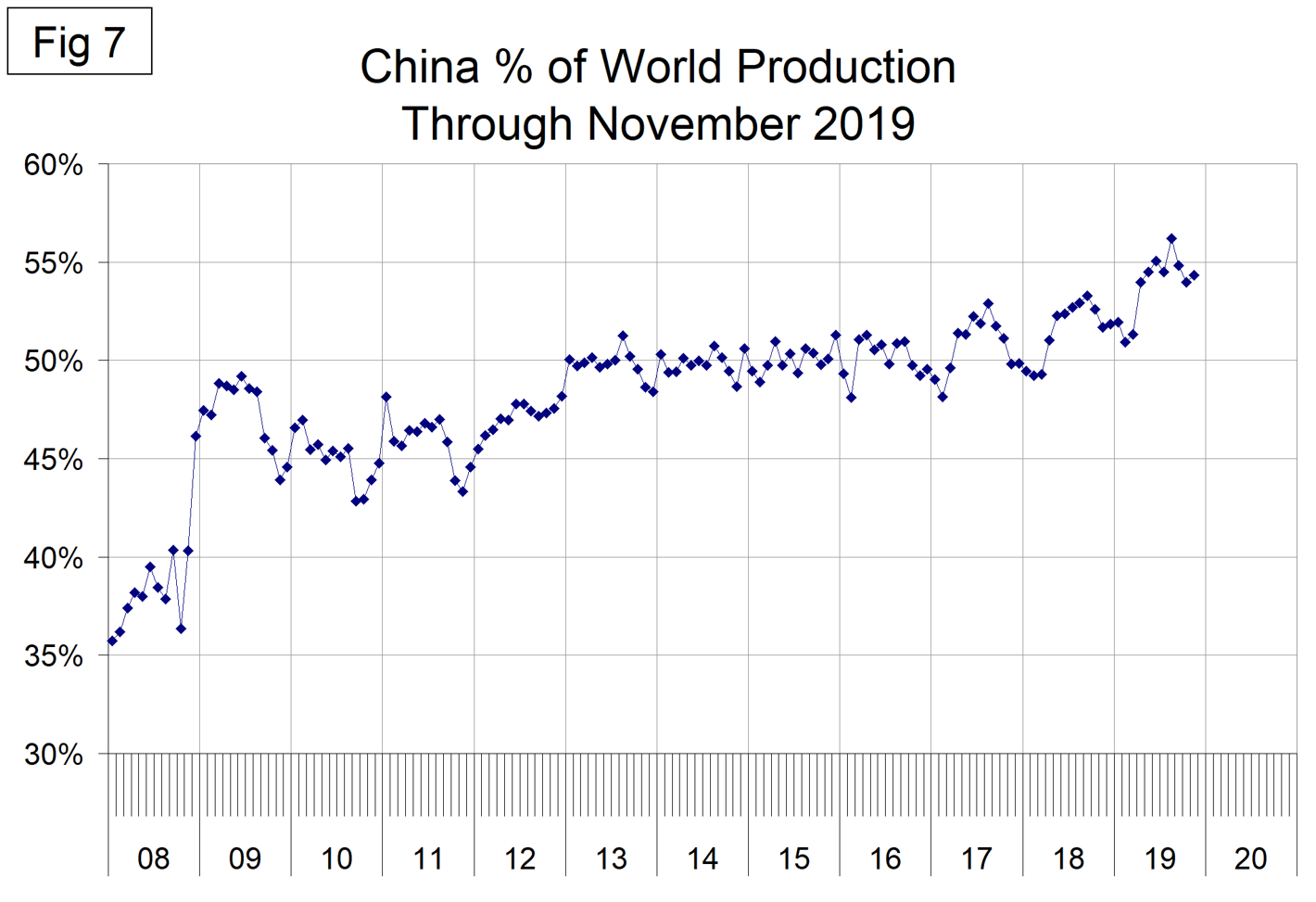
The October 2019 WSA Short Range Outlook (SRO) for apparent steel consumption in 2019 and 2020 is shown by region in the graphic below.

The map below is a schematic from the WSA showing the relative production of the major steel-producing nations in August.
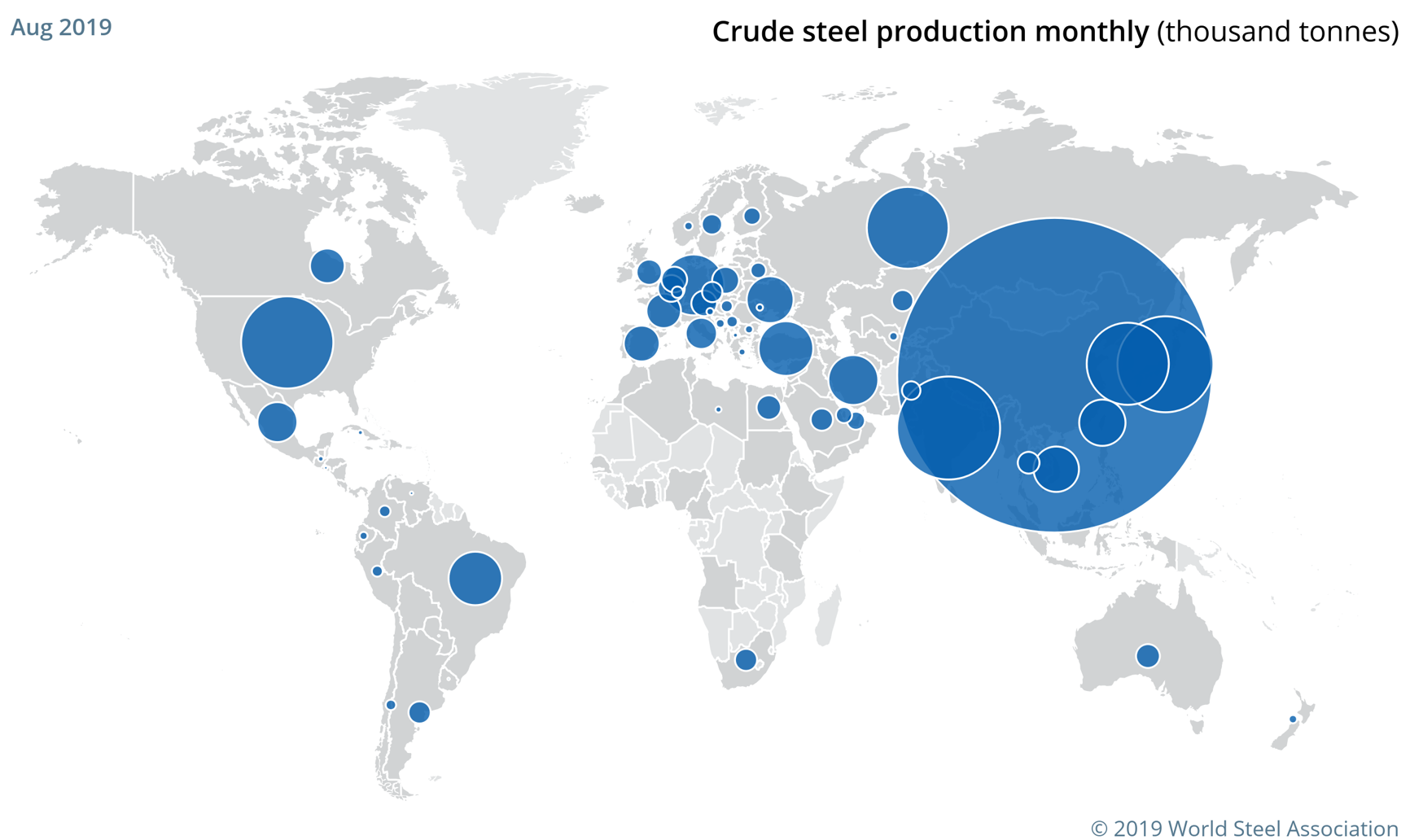
SMU Comment: Steel production in the U.S. declined by less than the rest of the world in three months through November and declined by much less than did Canada and Mexico. This analysis is based on data made public monthly by the World Steel Association, which lately seems to have been overly optimistic about future global steel production. China is slowing but the rest of the world is slowing faster.
The WSA represents approximately 85 percent of the world’s steel production, including over 160 steel producers, national and regional steel industry associations, and steel research institutes. (Note that at the bottom of Table 1, WSA says this represents 99 percent of steel production, so presumably there are reports of production by countries that include nonmembers.) The OECD has taken over responsibility for tracking global steel capacity. Their data shows that global capacity declined each year 2016 through 2018. Capacity in 2018 was 2.234 billion metric tons, down from 2.322 billion tons in 2015.

Peter Wright
Read more from Peter WrightLatest in Economy

ISM: Manufacturing expansion loses steam after two months of growth
US manufacturing activity slowed in March after two straight months of expansion, according to supply executives contributing to the Institute for Supply Management (ISM)’s latest report.

Chicago Business Barometer rose to 16-month high in March
The Chicago Business Barometer increased for the third-consecutive month in March. Despite this, it still reflects contracting business conditions, as it has since December 2023.

Durable goods orders rise again in February
Transportation equipment led the increase, rising 1.5% to $98.3 billion.

Consumer confidence falls for fourth consecutive month
People remain concerned about inflation, trade policies, and tariffs.

Housing starts ticked up in February
Single-family starts last month hit a rate of 1.10 million, a month-over-month increase of 11.4%, census data shows.
